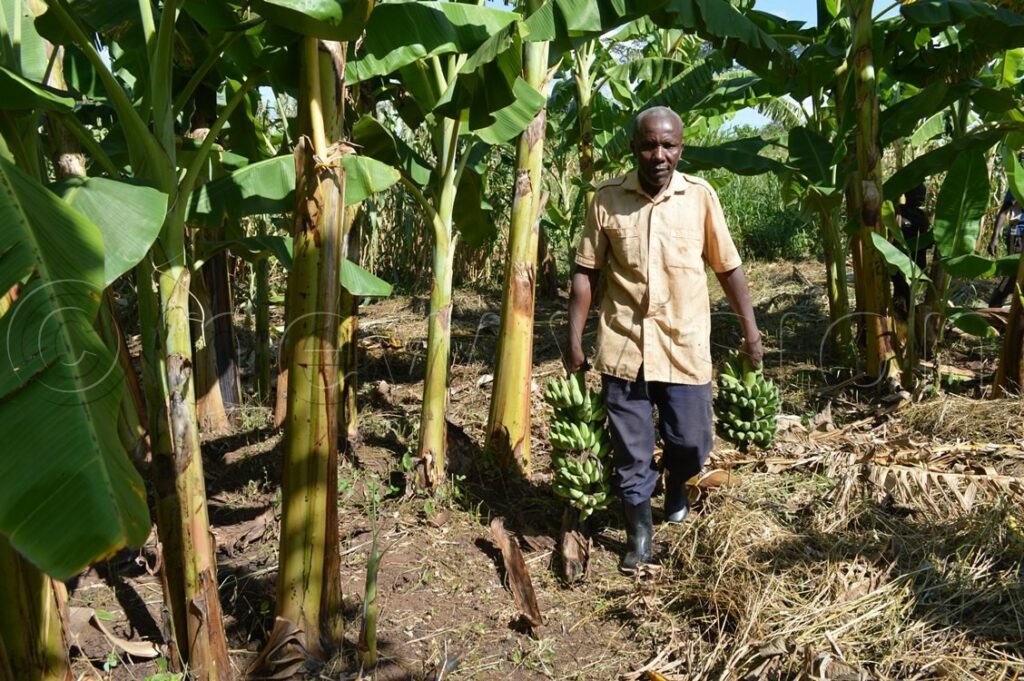When Livingstone Nakabaale talks about growing kayinja (grey juice bananas), one is inspired to invest in growing the crop.
Growing juice bananas is one of the many enterprises at Nakabale’s farm located in Kalagala, Nakaseke district. The farm sits on over 25 acres
How to care for kayinja
Kayinja is the Luganda name given to pisang awak usually applied to the plants that produce banana fruits with little or no wax. The waxy fruit variant is called Musa or Kimusa. It has its origins in South East Asia.
In Uganda, kayinja is mostly used to make local brew and juice. The juice is made by mashing ripe fruit in a large tub or bowl using banana leaves or spear grass.
It is blended using hands until the fruit disintegrates. After a few minutes, strain the juice from the blend. In its raw state, it is a sweet drink.
Kayinja is one of the most resilient bananas in the country. It can outlive some of the worst dry spells because it does not need a lot of water to thrive.
Planting and growth
According to Nakabaale kayinja is propagated like other bananas. The recommended spacing is 10ft (3m) x 10ft (3m) and a depth of 0.2m at the onset of the rainy season.
He says about 450 suckers can be planted on an acre. Kayinja takes about 12 months to mature. Kayinja is more resistant to diseases than other bananas.
Nakabaale says he plants the suckers, about four metres apart and grows cassava between rows.
How to grow kayinja
Controlling weeds in the first year of planting is important. Once the plants get enough leaves to completely shade the ground, weeds become less of a problem and mulching can further control the weeds.
Weeds can be pulled by hand or weeded with a hoe. Hand or hoe, weeding can either be carried out independently or combined with chemical weed control. For example, ring or row weeding of the banana plants can be followed by a herbicide application on the remaining weeds.
Chemical weed control is less labour intensive, provides longer control and is faster than hand or hoe-weeding.
Chemical weed-killers are applied using a knapsack sprayer.
If a contact herbicide is used, precautions must be taken to avoid it drifting onto the bananas. Spraying should be done on a day without or with a slight wind.






